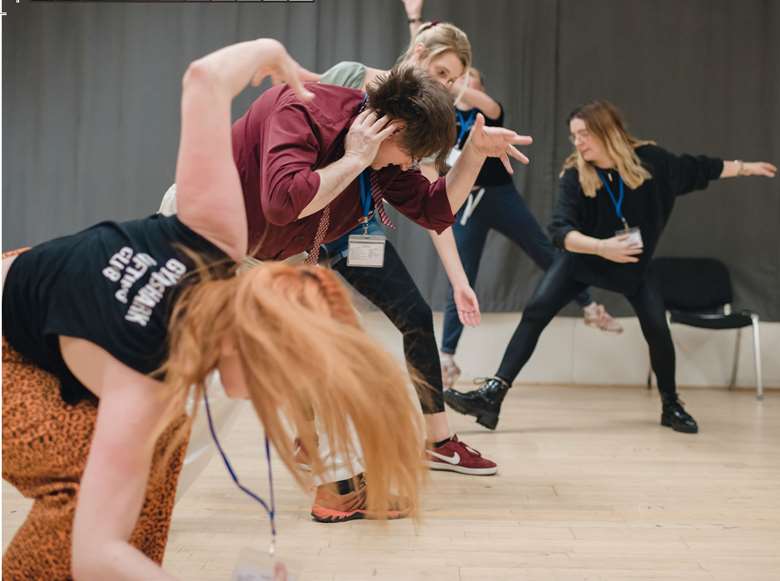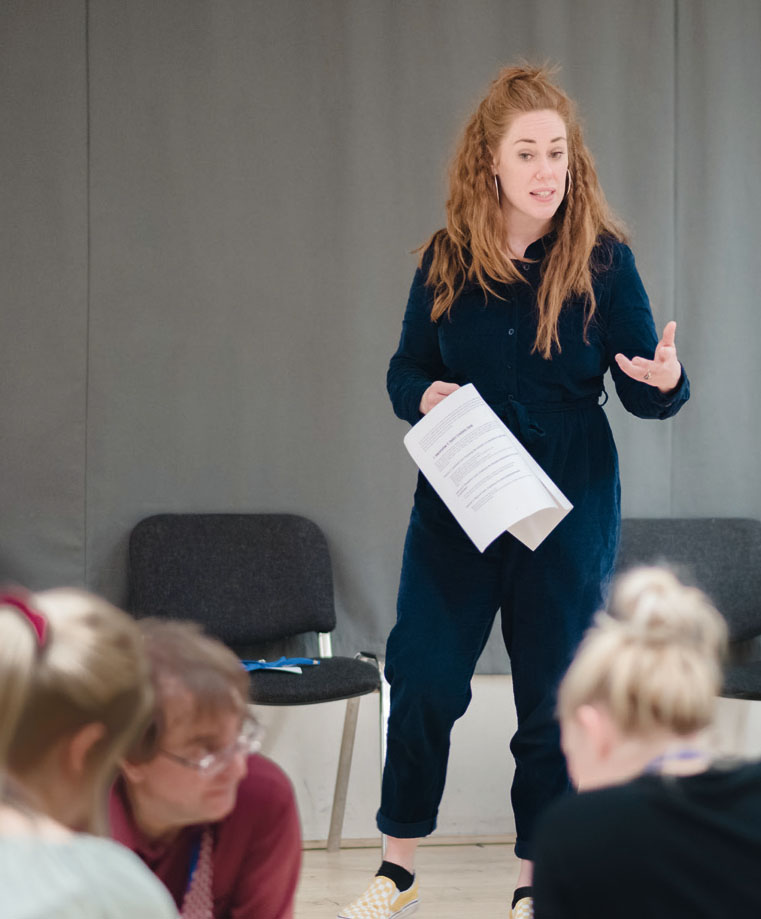Tools for invention
Jemma McDonnell
Friday, May 1, 2020
Jemma McDonnell, Artistic Director of The Paper Birds, shares the theatre company's best trick for improvisation within devising

EMMA HARE
The Paper Birds are a devising theatre company who were co-founded in 2003 as graduates of Bretton Hall, Leeds University. We began, as many graduate companies, devising shows in the daytime and waitressing at night-time to pay the bills. We loved making work together and had been given enough encouragement through our first show A Smile Fell in the Grass; which we took to the NSDF and the Edinburgh Fringe in 2003, to feel like the gamble of setting up our own company might just be worth it.
We spent the first few years of our practice making shows with a focus on form rather than content. We were sharpening our skills in storytelling and physical theatre and experimenting with acting and non-acting. At this point we didn't have a process as such, sometimes we would copy exercises we had read about as students, hoping the working methods of the greats such as Complicité, Pina Bausch or Forced Entertainment would lead us to create work as impactful and inspiring. Mainly though, we all just came to rehearsals with ideas, random props, pictures, pieces of music. We would all write sections of text and play with ways to stage these, or we would improvise around characters or themes and see where this took us.
A pack of cards to spark creativity
We started making the Theatre Creativity Cards in 2007. We had been asked by a friend; author and educational consultant, Martin Robinson, to experiment with some cards he and Ken Campbell were working on. The cards were a tool for improvisation: Campbell had improvised entire shows from such cards.
We loved the concept of turning a card over and reacting, creating something new from this. In varying forms, this was a method that has been used by artists for decades. For example, the ‘cut up technique’ had been used as early as the 1920's and has been championed by icons such as David Bowie, Bob Dylan and Kurt Cobain. In this instance, artists wrote words, phrases and prose down on paper before cutting them up, then placing them back together to create song lyrics.

© EMMA HARE
McDonnell leads CPD with The Paper birds at the National Theatre in 2020
This approach allowed a randomness, a re-shuffling of ideas with often unexpected and interesting results. Similar techniques have also been used by writers and poets, allowing juxtaposing or unexpected imagery to appear and new ideas to surface.
There was something in this search for the unexpected and unexplored that we were drawn to as devisers. We had created show titles in this way before, just never actual material for a show. And so we began to experiment with cards in our rehearsals. At first with the cards given to us by Martin but then creating and working with our own pack.
It took some getting used to. There was still a hangover of fear around the improvised element of the task. The definition of improvisation is to create ‘spontaneously or without preparation’. This put the fear of God into us. We had all watched the skill and sheer confidence required by actors and comedians in ‘Whose Line is it Anyway?’ on Channel 4 and this reference point overshadowed our first few weeks of using the cards.
Creating a framework
However, over time we began to break down the fear by creating different packs of cards; movement cards to explore movement and physicality specifically, emotional cards exploring the emotions and feelings of characters or performers, thoughtful cards to experiment with the thoughts and motivations of characters or performers.
We also began to make up small tasks to give the improvisations a frame. Turn over the card and create a freeze frame. Turn over a card and talk for 30 seconds. These very simple tasks took the overwhelming vastness out of the improvisation, it gave a small but important frame to improvise within. It felt safe.
From this feeling of safety, new ideas and approaches began to form. We made a Playful pack of cards to explore genre, audience, style and form. We devised new ways to work with the cards to create character, dialogue and plot. Most importantly, we focused less on the skill of improvisation and more on improvisation as a means to creating new, exciting material. The cards broke our habits of returning to the same ideas; they pushed us in new directions.
We have been using the cards not only within our own practice but within schools, colleges and universities for a number of years now, and we published our Theatre Creativity Cards in 2018. The cards are extremely popular with students as they offer many ways in which you can get up on your feet and get going, rather than sitting and planning or thinking about a show. And while working with the cards can lead to a range of emotions: daunting, exciting, unexpected and rewarding, we believe this is how devising should be.
It also feels like a real milestone and achievement, 17 years into forming as a company, not only now to have our own working methodologies and approaches to devising, but to be able to share some of these through the Theatre Creativity Cards.

